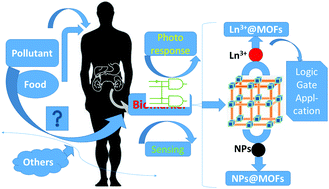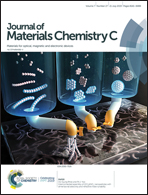Photofunctional MOF-based hybrid materials for the chemical sensing of biomarkers
Abstract
Metal–organic frameworks (MOFs) possess important advantages over other candidate classes for chemo-sensory materials because of their exceptional structural tunability and properties. Luminescence sensing using MOFs is a simple, intuitive and convenient method to recognize species. Biomarkers are key molecular or cellular events that link a specific environmental exposure to a health outcome. Biomarkers play an important role in understanding the relationships between exposure to environmental chemicals, the development of chronic human diseases, and the identification of subgroups that are at increased risk of disease. Up to the present, all kinds of species have been utilized for the chemical sensing of biomarkers, involving nanoparticles (NPs) and their nanocomposites, small molecules and special complex sysems. Among MOF-based hybrid materials, the MOFs contained in the hybrids have been tested in the sensing of biomarkers. In this review, recent progress on research into photofunctional MOF-based hybrid materials for the chemical sensing of biomarkers is summarized. It needs to be said that the lanthanide-functionalized MOF hybrid materials studied by the author's group have been especially investigated for the sensing of biomarkers, which is the emphasis of this review.

- This article is part of the themed collection: Recent Review Articles


 Please wait while we load your content...
Please wait while we load your content...